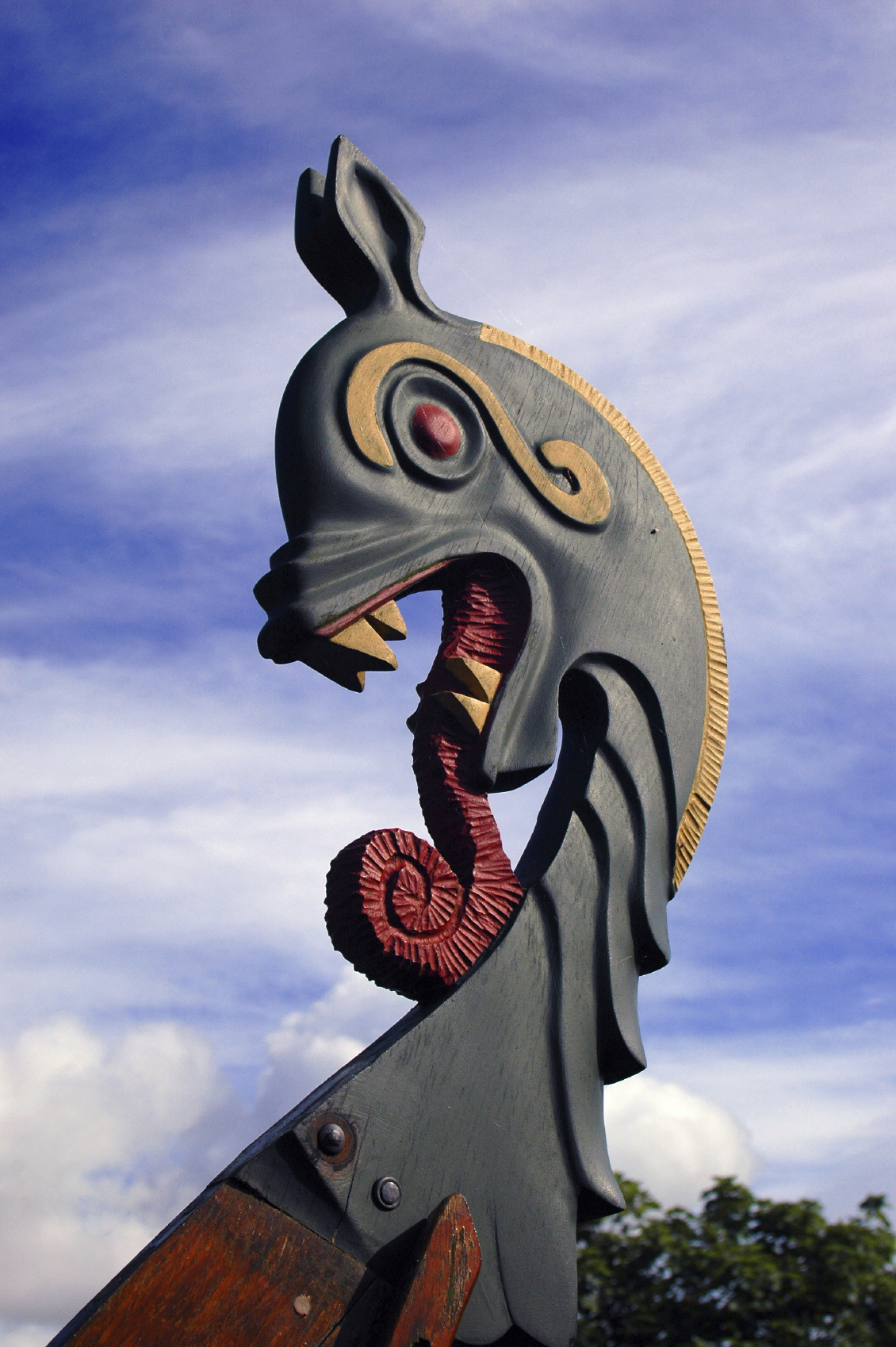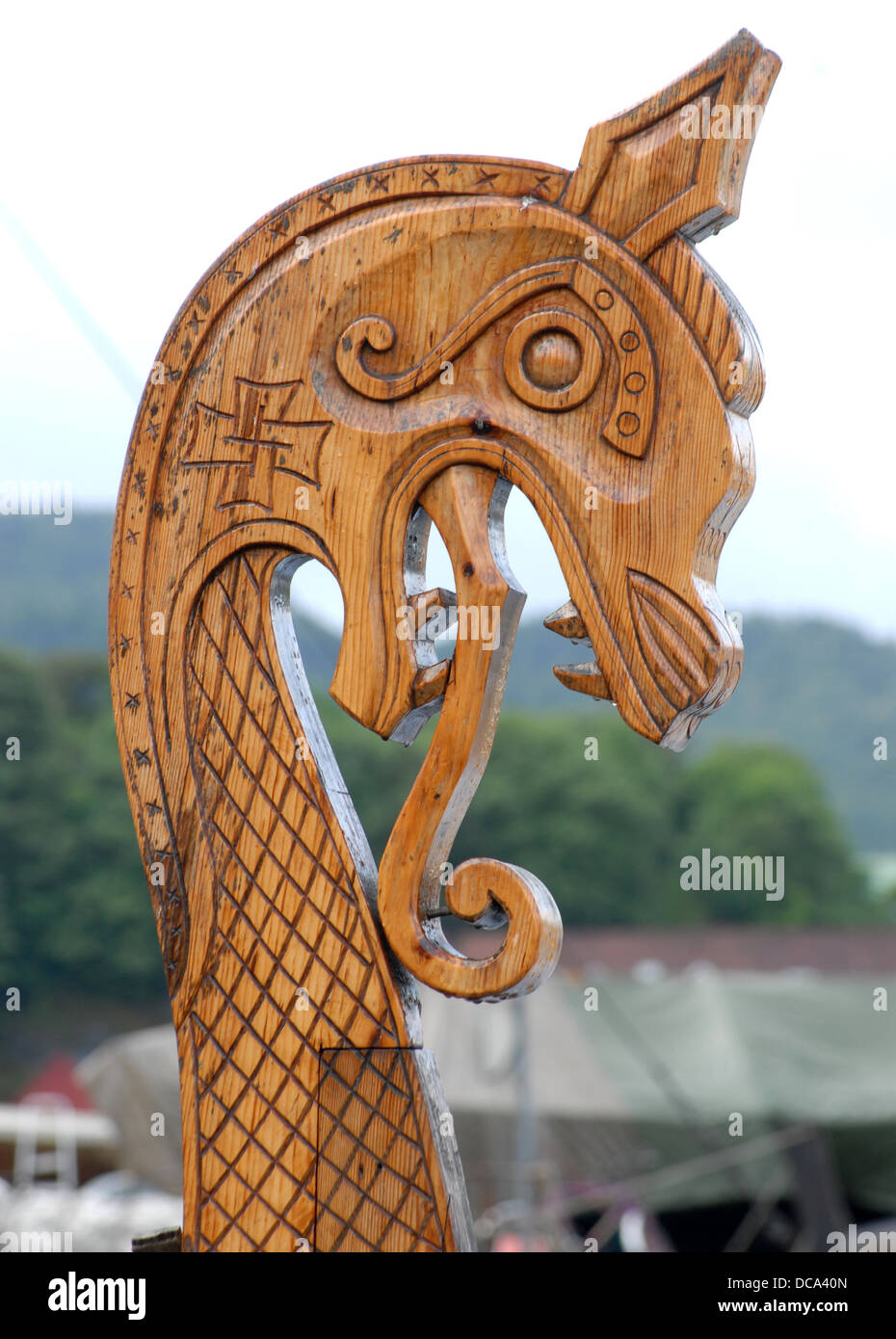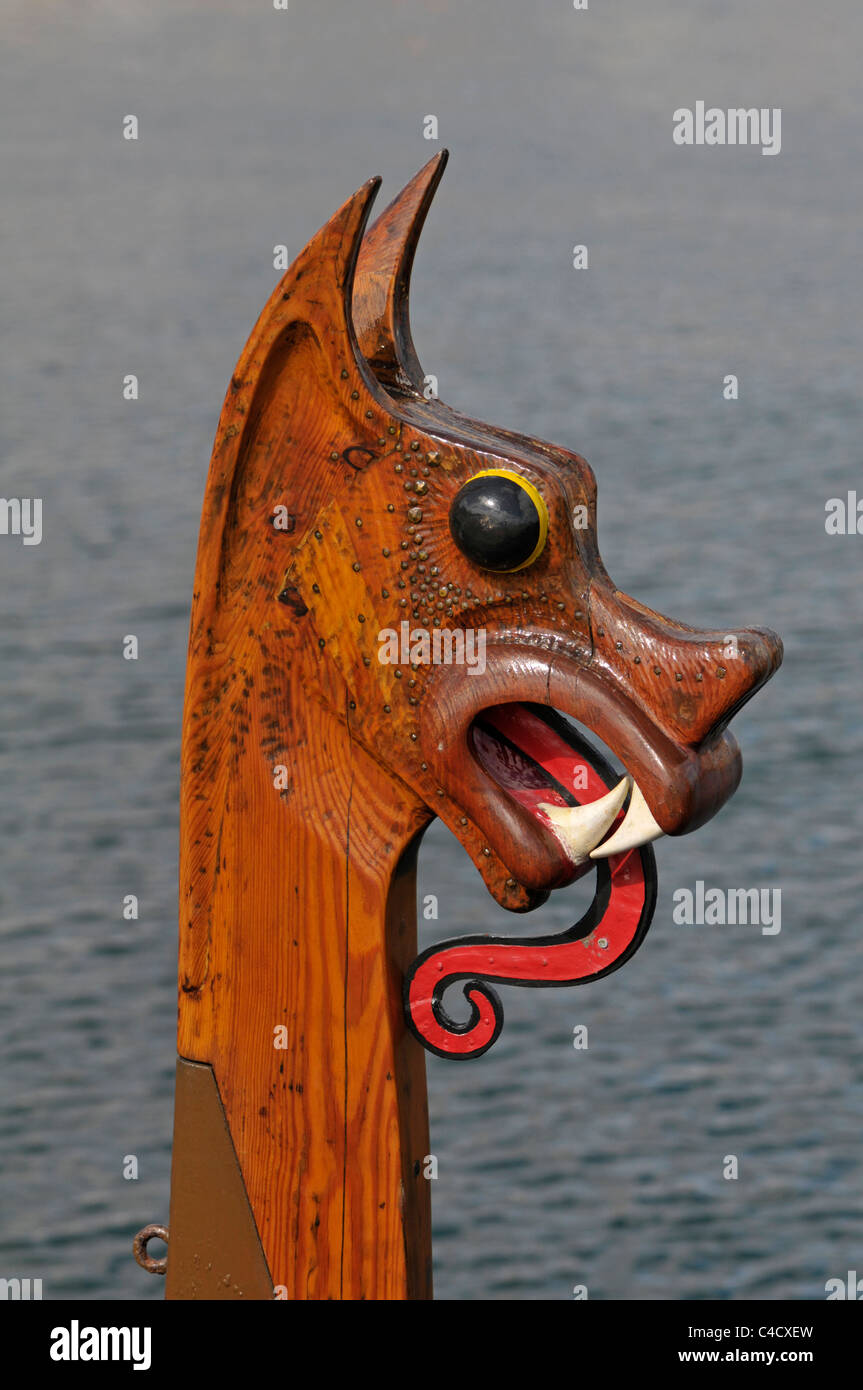Viking figurehead The figurehead of the replica longship G… Flickr

Pin by Elizabeth Cutts on vikings Viking longship, Viking art, Vikings
Famous discoveries of Viking ships at Gokstad and Oseberg, Norway, in 1880 and 1906, respectively, established the classic image of the dragon-headed warship. Longships from both sites were.

Secrets of Secrets Photo Viking ship, Vikings, Tall ships
10 Facts About Viking Longships Harry Atkins 02 Apr 2023 Viking Ship Museum in Oslo, Norway Image Credit: Sergey-73 / Shutterstock.com The Vikings are best remembered as fearsome warriors, but their longlasting legacy owes just as much to their seafaring aptitude.

Viking Boat Dragon Head Template / Dr Giffith Notes on Dan Nezif Abdullah
The woodcarvings. It is the carvings that make the Oseberg Ship so special, and often referred to as "the most beautiful Viking Ship in the world". The carvers on the ship and also other objects like the wagon, bed, headposts, sleds etc. have been referred to as representing the "Oseberg style". The quality of the carvings is proof that.

Hand Carved Viking Ship Wall Hanging
Awesome Prices & High Quality Here On Temu. New Users Enjoy Free Shipping & Free Return. Come and check All Categories at a surprisingly low price, you'd never want to miss it.

Viking ship masthead against blue sky Vikings, Mittelalter, Mythologie
The Viking longships owned by kings and chieftains often had a head from a mythological animal in the bow, it offered protection from sea monsters and men, bad weather and raids along the voyages.. The head has been held a secret and has not been seen by anyone besides the artist and the ship builders. Dragon's Head Ceremony. April the.

Viking ship by petteram Viking ship, Vikings, Viking life
Five animal heads were found in the Oseberg grave, but none of them belonged to the ship. Probably the figures were used in religious processions. However, these beautiful animal heads can give us an indication of how the dragon heads that adorned the Viking ships might have looked like.

The Vikings TheSchoolRun
Viking Ships were built by the Scandinavians during the Viking Age (c. 790 CE - c. 1100 CE) and were used both within Scandinavia and beyond for purposes ranging from being the most important means of transport to trade and warfare. Viking expansion, moreover, would not have been possible without ships.

Vikings head to Wareham. Game 2 Alfred the Great Más Viking Life, Viking
Read reviews, compare deals and find your next dream cruise with Cruise Critic right now. Cruise smarter with expert advice, insider tips and more. Find your deal right now!

Pin on Gubias Art
The 'Vikings' were seafaring raiders and traders from Scandinavia. The period known as the Viking Age lasted from AD 700 until 1100. 'Viking' was the name given to the seafarers from Norway, Denmark, Finland and Sweden. During the Viking age many Vikings travelled to other countries, such as Britain and Ireland.

Viking ship head hires stock photography and images Alamy
The carved beast heads at the front of the longships were there as protection, as Vikings believed they would scare the spirits of hostile lands - they could fight hundreds of people, but they weren't too enthusiastic about encountering evil spirits, nor having these helping their enemies.

Viking figurehead The figurehead of the replica longship G… Flickr
The ships' strength lay in this method of construction. The clinker-built boards, or the overlap between two boards, act as a longitudinal strengthening element in the hull. This allows for a greater distance between the frames. Together, this made the ships light and strong at the same time. Explore the boat's hull.

myklebust Reddit post and comment search SocialGrep
All Viking ships are clinker built; the planks were overlapped at one edge and riveted together. In clinker shipbuilding you start build the outside first, and then put a frame inside it. The other style of wooden shipbuilding, used by the Mary Rose and the Victory, is called carvel.

Replica of Viking Ship Dragon Head, Shetland, Scotland, UK Stock Photo Alamy
A look at various Viking boats and ships and how the Vikings navigated their way across the open sea to Iceland and beyond. Suitable for Key Stage 2, Key Stage 3 and Second Level history

Pin on Beowulf
The head of a dragon, horse, or swan was usually sculpted onto the bow. The Vikings also mounted their shields along the side of the vessel to have them ready in the event of an attack. These ships were likely the ones used in the raids in England and France. The second kind of ship was known as the knörr, meaning "halfship". The halfship.

Viking Boat Viking ship, Viking art, Viking aesthetic
Oseberg Heads. One of the most enigmatic and undoubtedly the most spectacular Viking finds was the ship burial unearthed in 1904 at the Oseberg farm near Tønsberg in the Vestfold region of Norway. Vikings often used longships as vessels for the moneyed dead and their effects, with care taken to ensure the occupants had enough accoutrements to.

Dragon Figurehead on the 'Hugin' Figurehead from the repli… Flickr
RM DCA40N - A beautifully carved figure head on a reconstructed viking long ship in the port at BERGEN Norway. RM E8EG0A - Serpent's head on stern, Oseberg Ship c.815-820 AD, Viking Ship Museum, Oslo, Norway 140820 62463. RM B26WG9 - Dragon head prow of Danish Viking ship 'Hugin' at Pegwell Bay Ramsgate Kent.